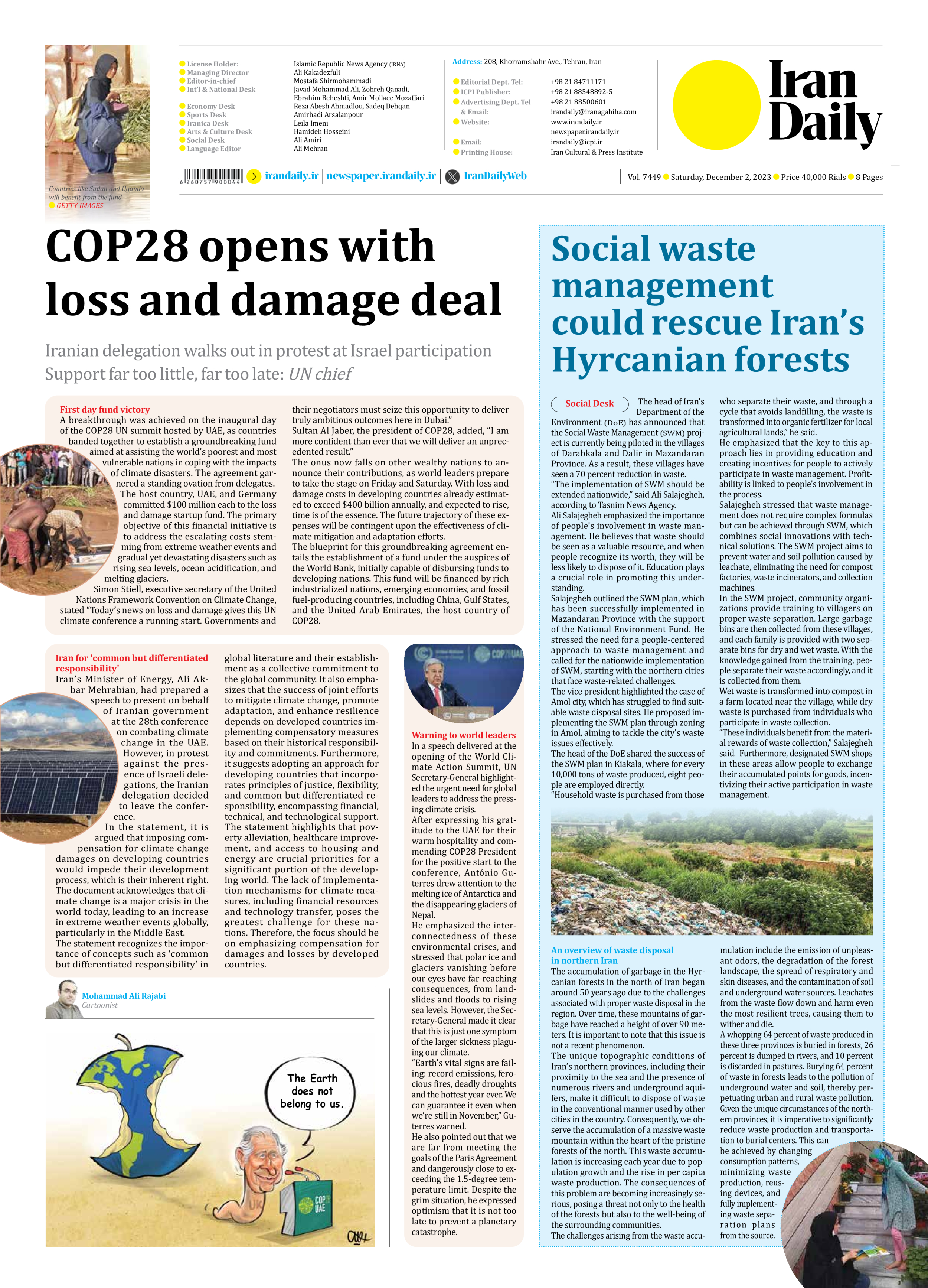
Social waste management could rescue Iran’s Hyrcanian forests
The head of Iran’s Department of the Environment (DoE) has announced that the Social Waste Management (SWM) project is currently being piloted in the villages of Darabkala and Dalir in Mazandaran Province. As a result, these villages have seen a 70 percent reduction in waste.
“The implementation of SWM should be extended nationwide,” said Ali Salajegheh, according to Tasnim News Agency.
Ali Salajegheh emphasized the importance of people’s involvement in waste management. He believes that waste should be seen as a valuable resource, and when people recognize its worth, they will be less likely to dispose of it. Education plays a crucial role in promoting this understanding.
Salajegheh outlined the SWM plan, which has been successfully implemented in Mazandaran Province with the support of the National Environment Fund. He stressed the need for a people-centered approach to waste management and called for the nationwide implementation of SWM, starting with the northern cities that face waste-related challenges.
The vice president highlighted the case of Amol city, which has struggled to find suitable waste disposal sites. He proposed implementing the SWM plan through zoning in Amol, aiming to tackle the city’s waste issues effectively.
The head of the DoE shared the success of the SWM plan in Kiakala, where for every 10,000 tons of waste produced, eight people are employed directly.
“Household waste is purchased from those who separate their waste, and through a cycle that avoids landfilling, the waste is transformed into organic fertilizer for local agricultural lands,” he said.
He emphasized that the key to this approach lies in providing education and creating incentives for people to actively participate in waste management. Profitability is linked to people’s involvement in the process.
Salajegheh stressed that waste management does not require complex formulas but can be achieved through SWM, which combines social innovations with technical solutions. The SWM project aims to prevent water and soil pollution caused by leachate, eliminating the need for compost factories, waste incinerators, and collection machines.
In the SWM project, community organizations provide training to villagers on proper waste separation. Large garbage bins are then collected from these villages, and each family is provided with two separate bins for dry and wet waste. With the knowledge gained from the training, people separate their waste accordingly, and it is collected from them.
Wet waste is transformed into compost in a farm located near the village, while dry waste is purchased from individuals who participate in waste collection.
“These individuals benefit from the material rewards of waste collection,” Salajegheh said. Furthermore, designated SWM shops in these areas allow people to exchange their accumulated points for goods, incentivizing their active participation in waste management.
An overview of waste disposal
in northern Iran
The accumulation of garbage in the Hyrcanian forests in the north of Iran began around 50 years ago due to the challenges associated with proper waste disposal in the region. Over time, these mountains of garbage have reached a height of over 90 meters. It is important to note that this issue is not a recent phenomenon.
The unique topographic conditions of Iran’s northern provinces, including their proximity to the sea and the presence of numerous rivers and underground aquifers, make it difficult to dispose of waste in the conventional manner used by other cities in the country. Consequently, we observe the accumulation of a massive waste mountain within the heart of the pristine forests of the north. This waste accumulation is increasing each year due to population growth and the rise in per capita waste production. The consequences of this problem are becoming increasingly serious, posing a threat not only to the health of the forests but also to the well-being of the surrounding communities.
The challenges arising from the waste accumulation include the emission of unpleasant odors, the degradation of the forest landscape, the spread of respiratory and skin diseases, and the contamination of soil and underground water sources. Leachates from the waste flow down and harm even the most resilient trees, causing them to wither and die.
A whopping 64 percent of waste produced in these three provinces is buried in forests, 26 percent is dumped in rivers, and 10 percent is discarded in pastures. Burying 64 percent of waste in forests leads to the pollution of underground water and soil, thereby perpetuating urban and rural waste pollution. Given the unique circumstances of the northern provinces, it is imperative to significantly reduce waste production and transportation to burial centers. This can be achieved by changing consumption patterns, minimizing waste production, reusing devices, and fully implementing waste separation plans from the source.







